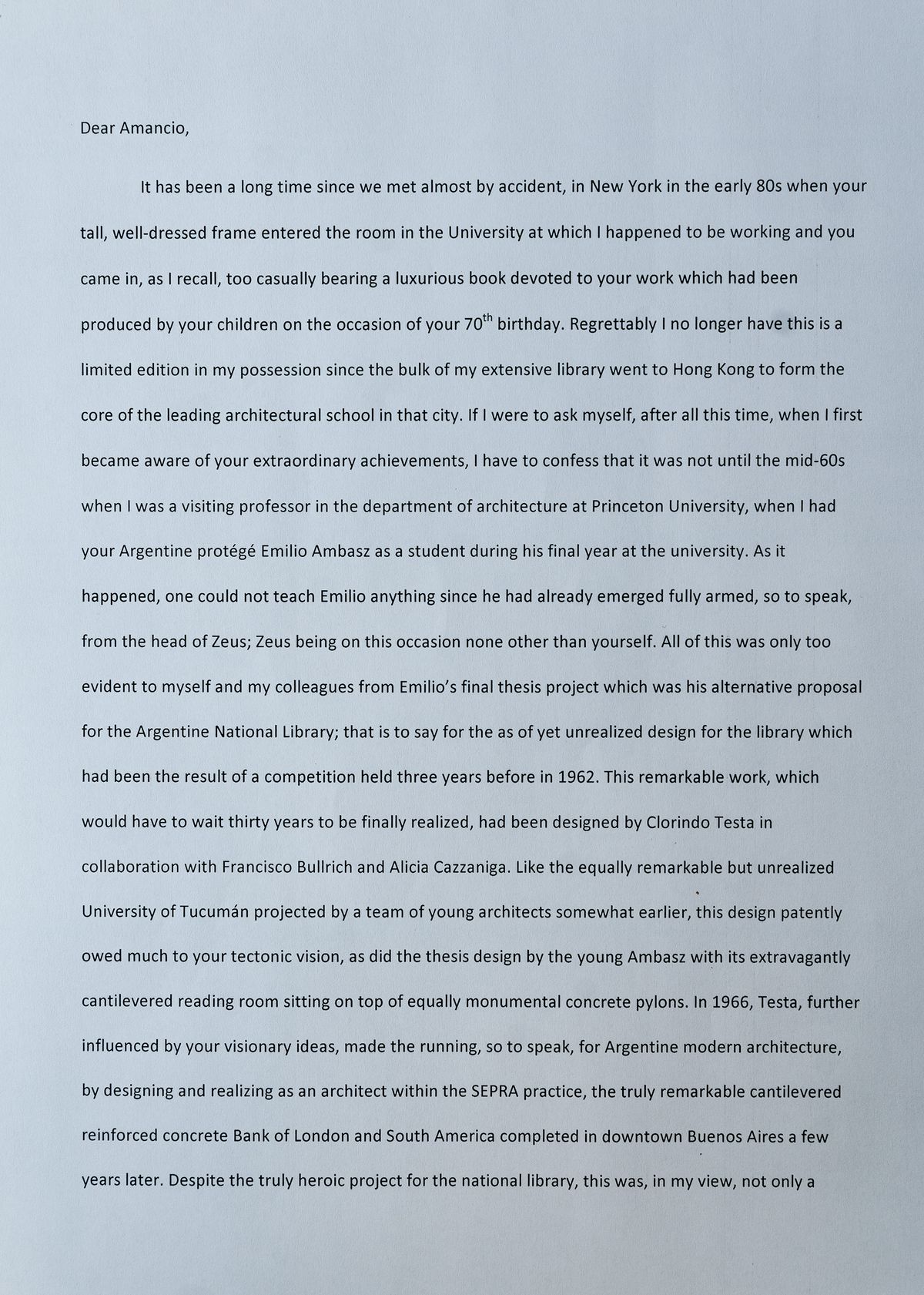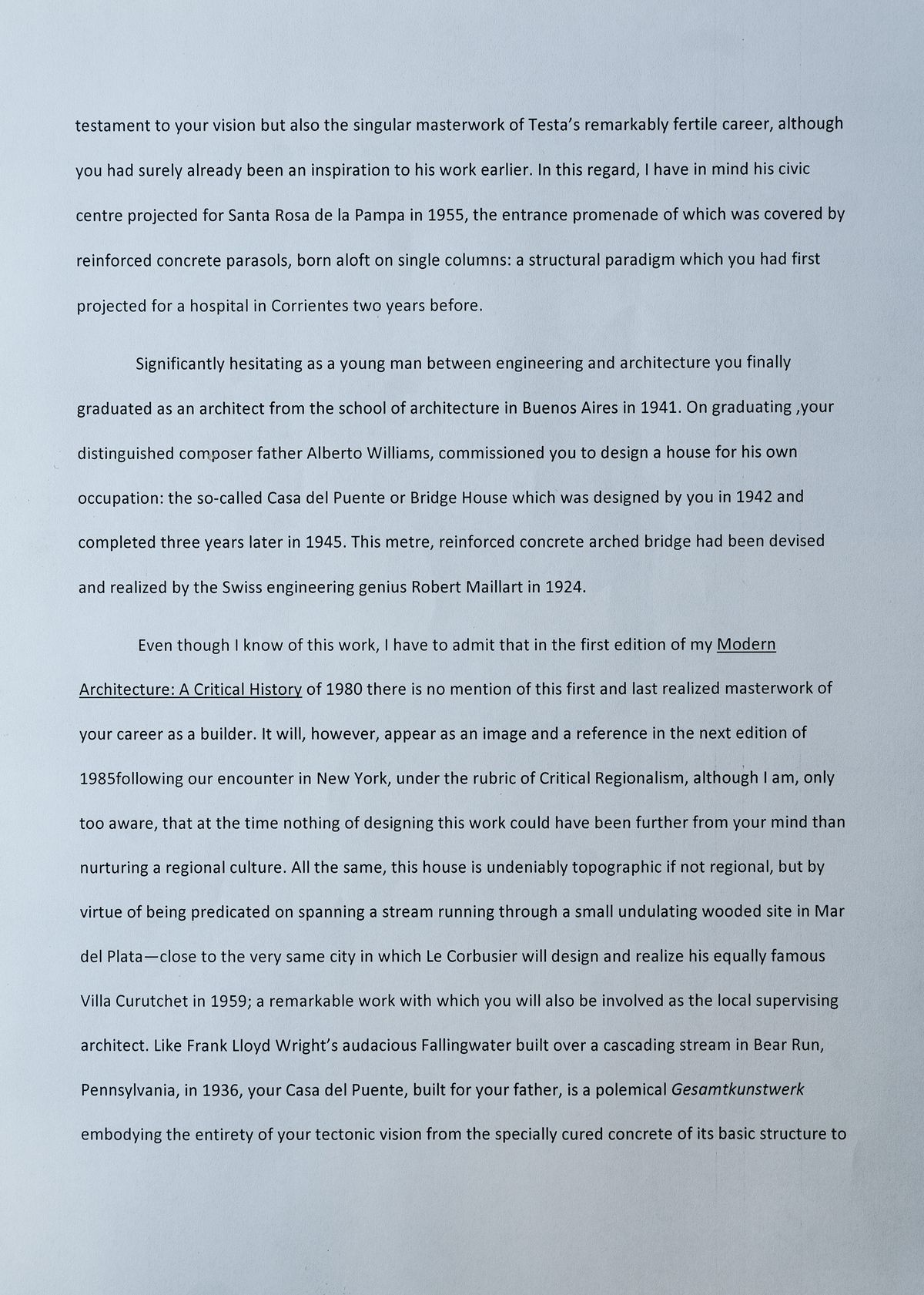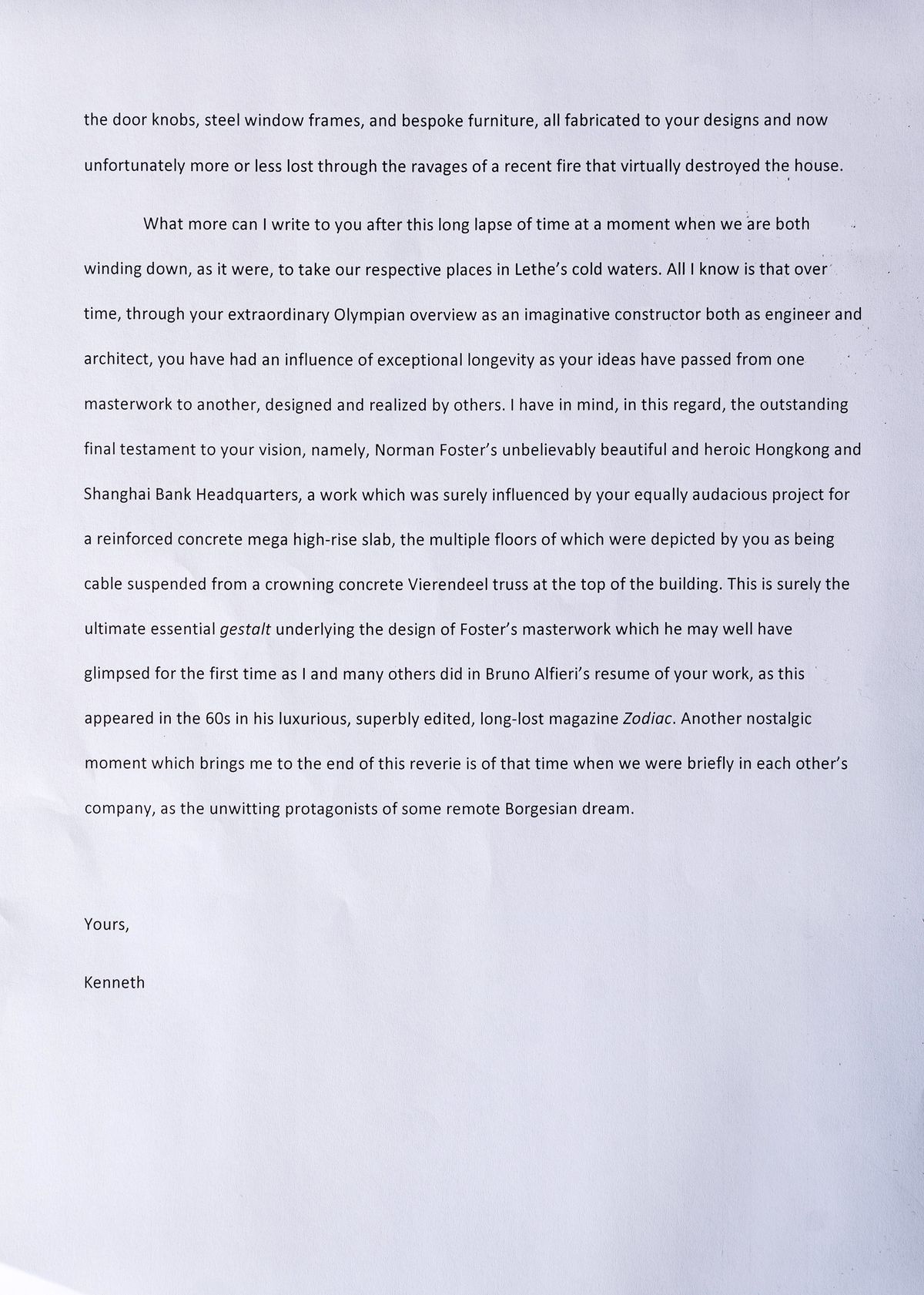It has been a long time since we met almost by accident, in New York in the early 80s when your tall, well-dressed frame entered the room in the University at which I happened to be working and you came in, as I recall, too casually bearing a luxurious book devoted to your work which had been produced by your children on the occasion of your 70th birthday. Regrettably I no longer have this is a limited edition in my possession since the bulk of my extensive library went to Hong Kong to form the core of the leading architectural school in that city. If I were to ask myself, after all this time, when I first became aware of your extraordinary achievements, I have to confess that it was not until the mid-60s when I was a visiting professor in the department of architecture at Princeton University, when I had your Argentine protégé Emilio Ambasz as a student during his final year at the university. As it happened, one could not teach Emilio anything since he had already emerged fully armed, so to speak, from the head of Zeus; Zeus being on this occasion none other than yourself. All of this was only too evident to myself and my colleagues from Emilio’s final thesis project which was his alternative proposal for the Argentine National Library; that is to say for the as of yet unrealized design for the library which had been the result of a competition held three years before in 1962. This remarkable work, which would have to wait thirty years to be finally realized, had been designed by Clorindo Testa in collaboration with Francisco Bullrich and Alicia Cazzaniga. Like the equally remarkable but unrealized University of Tucumán projected by a team of young architects somewhat earlier, this design patently owed much to your tectonic vision, as did the thesis design by the young Ambasz with its extravagantly cantilevered reading room sitting on top of equally monumental concrete pylons. In 1966, Testa, further influenced by your visionary ideas, made the running, so to speak, for Argentine modern architecture, by designing and realizing as an architect within the SEPRA practice, the truly remarkable cantilevered reinforced concrete Bank of London and South America completed in downtown Buenos Aires a few years later. Despite the truly heroic project for the national library, this was, in my view, not only a testament to your vision but also the singular masterwork of Testa’s remarkably fertile career, although you had surely already been an inspiration to his work earlier. In this regard, I have in mind his civic centre projected for Santa Rosa de la Pampa in 1955, the entrance promenade of which was covered by reinforced concrete parasols, born aloft on single columns: a structural paradigm which you had first projected for a hospital in Corrientes two years before.
Significantly hesitating as a young man between engineering and architecture you finally graduated as an architect from the school of architecture in Buenos Aires in 1941. On graduating ,your distinguished composer father Alberto Williams, commissioned you to design a house for his own occupation: the so-called Casa del Puente or Bridge House which was designed by you in 1942 and completed three years later in 1945. This metre, reinforced concrete arched bridge had been devised and realized by the Swiss engineering genius Robert Maillart in 1924.
Even though I know of this work, I have to admit that in the first edition of my Modern Architecture: A Critical History of 1980 there is no mention of this first and last realized masterwork of your career as a builder. It will, however, appear as an image and a reference in the next edition of 1985 following our encounter in New York, under the rubric of Critical Regionalism, although I am, only too aware, that at the time nothing of designing this work could have been further from your mind than nurturing a regional culture. All the same, this house is undeniably topographic if not regional, but by virtue of being predicated on spanning a stream running through a small undulating wooded site in Mar del Plata—close to the very same city in which Le Corbusier will design and realize his equally famous Villa Curutchet in 1959; a remarkable work with which you will also be involved as the local supervising architect. Like Frank Lloyd Wright’s audacious Fallingwater built over a cascading stream in Bear Run, Pennsylvania, in 1936, your Casa del Puente, built for your father, is a polemical Gesamtkunstwerk embodying the entirety of your tectonic vision from the specially cured concrete of its basic structure to the door knobs, steel window frames, and bespoke furniture, all fabricated to your designs and now unfortunately more or less lost through the ravages of a recent fire that virtually destroyed the house.
What more can I write to you after this long lapse of time at a moment when we are both winding down, as it were, to take our respective places in Lethe’s cold waters. All I know is that over time, through your extraordinary Olympian overview as an imaginative constructor both as engineer and architect, you have had an influence of exceptional longevity as your ideas have passed from one masterwork to another, designed and realized by others. I have in mind, in this regard, the outstanding final testament to your vision, namely, Norman Foster’s unbelievably beautiful and heroic Hongkong and Shanghai Bank Headquarters, a work which was surely influenced by your equally audacious project for a reinforced concrete mega high-rise slab, the multiple floors of which were depicted by you as being cable suspended from a crowning concrete Vierendeel truss at the top of the building. This is surely the ultimate essential gestalt underlying the design of Foster’s masterwork which he may well have glimpsed for the first time as I and many others did in Bruno Alfieri’s resume of your work, as this appeared in the 60s in his luxurious, superbly edited, long-lost magazine Zodiac. Another nostalgic moment which brings me to the end of this reverie is of that time when we were briefly in each other’s company, as the unwitting protagonists of some remote Borgesian dream.
Yours,
Kenneth


